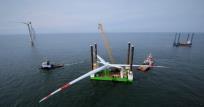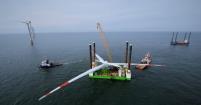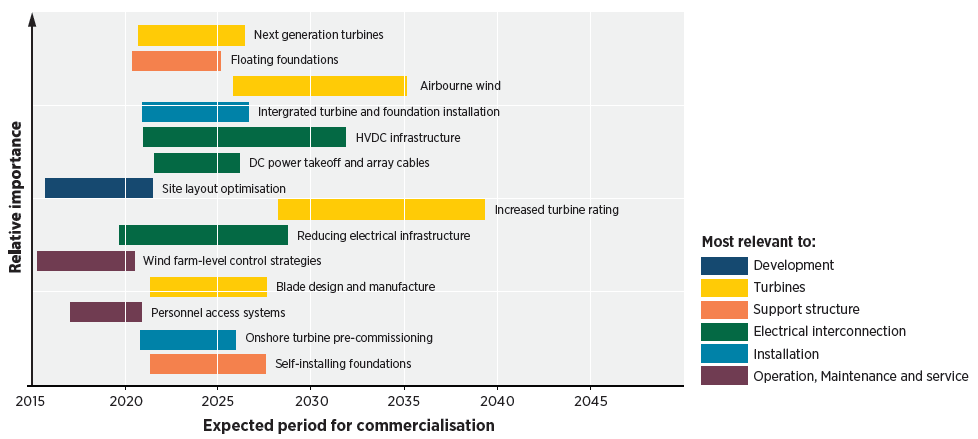

A Gale of Innovation: the future of offshore wind
Newsletter
In 2002, Denmark commissioned the world’s first commercial-scale offshore wind power plant. With an installed capacity of 160 megawatts (MW), the Horns Rev plant set the stage for a storm of ever growing farms with larger turbines; by the end of 2015 there was 13 gigawatts (GW) of installed offshore wind capacity in the world. And while most offshore plants are located in Europe, innovations are positioning the technology to become a leading global power generator in the future.
IRENA’s latest report Innovation Outlook: Offshore Wind, released today at the 15th World Wind Energy Conference and Exhibition in Tokyo, anticipates that offshore wind capacity could grow from 13 GW in 2015 to 400 GW by 2045.

The report predicts that offshore wind power will progress past today’s mostly commercial technology, to become an important component of the global energy mix over the next three decades. Offshore Wind is the third in IRENA’s Innovation Outlook series, which includes future developments in renewable mini-grids and advanced liquid biofuels.
Technological advancements have reduced costs and driven market expansion for wind power. On-shore wind power has now reached cost competitiveness with conventional power generation technologies, and more attention is now being paid to offshore applications which can access high wind resources sites.
“The EU-2020-targets spurred innovation and industrialisation in offshore wind energy, which have brought the technology close to competitiveness with coal and gas,” said Ulrik Stridbæk, the Senior Director of Group Regulatory Affairs at DONG Energy and one of the report’s expert reviewers. By 2030, the off-shore wind market is projected to globally increase reaching 100 GW of total installed capacity.
Forecasted innovations
Offshore Wind details the developments that are making offshore wind a competitive energy alternative, and will enable its large-scale deployment over the next three decades. The report finds the introduction of technological advances, such as next-generation turbines with larger rotors, and advances in electrical transmission, as particularly significant.
Typical modern offshore wind turbines have a 6 MW capacity, with rotor diameters that reach to around 150 meters, but developments in blade and drivetrain technology are expected enable even larger turbines with higher power ratings — resulting in a lower levelized cost of electricity. The report anticipates commercialisation of 10 MW turbines in the 2020s, and the 2030s could see commercialised 15 MW turbines.
“Floating foundations for wind farms, are a radical innovation that could open significant new markets in deep waters,” says Francisco Boshell, a renewable energy analyst at IRENA. “We’re already seeing advancements in that area, with several pilot projects underway. The world’s first floating wind farm, a 30 MW wind farm in Scotland to be operational by 2017, will be located in water more than 100 metres deep.”

Innovations in technology, available sites’ characteristics, market scale and competition strategies, and decreasing financing risk, is expected to lower the average levelized cost of electricity of offshore wind farms from USD 170/MWh to USD 95/MWh by 2030 and USD 74/MWh by 2045. Impressive price developments have already been seen in 2015 and 2016, for projects to be commissioned for 2020, and the winning bid for the first two phases of Borssele offshore wind farm in the Netherlands was around USD 80/MWh.
Apart from technology developments, the cost of finance is a key factor in increased offshore wind power adoption. Concerted action from the public and private sectors, focused on growing robust markets and facilitating technology innovation, are expected to drive continued cost reductions and enable offshore wind to be a competitive and reliable clean power supply option for decades to come.
To learn more about the future development of offshore wind technology, read the full report on IRENA’s website.




